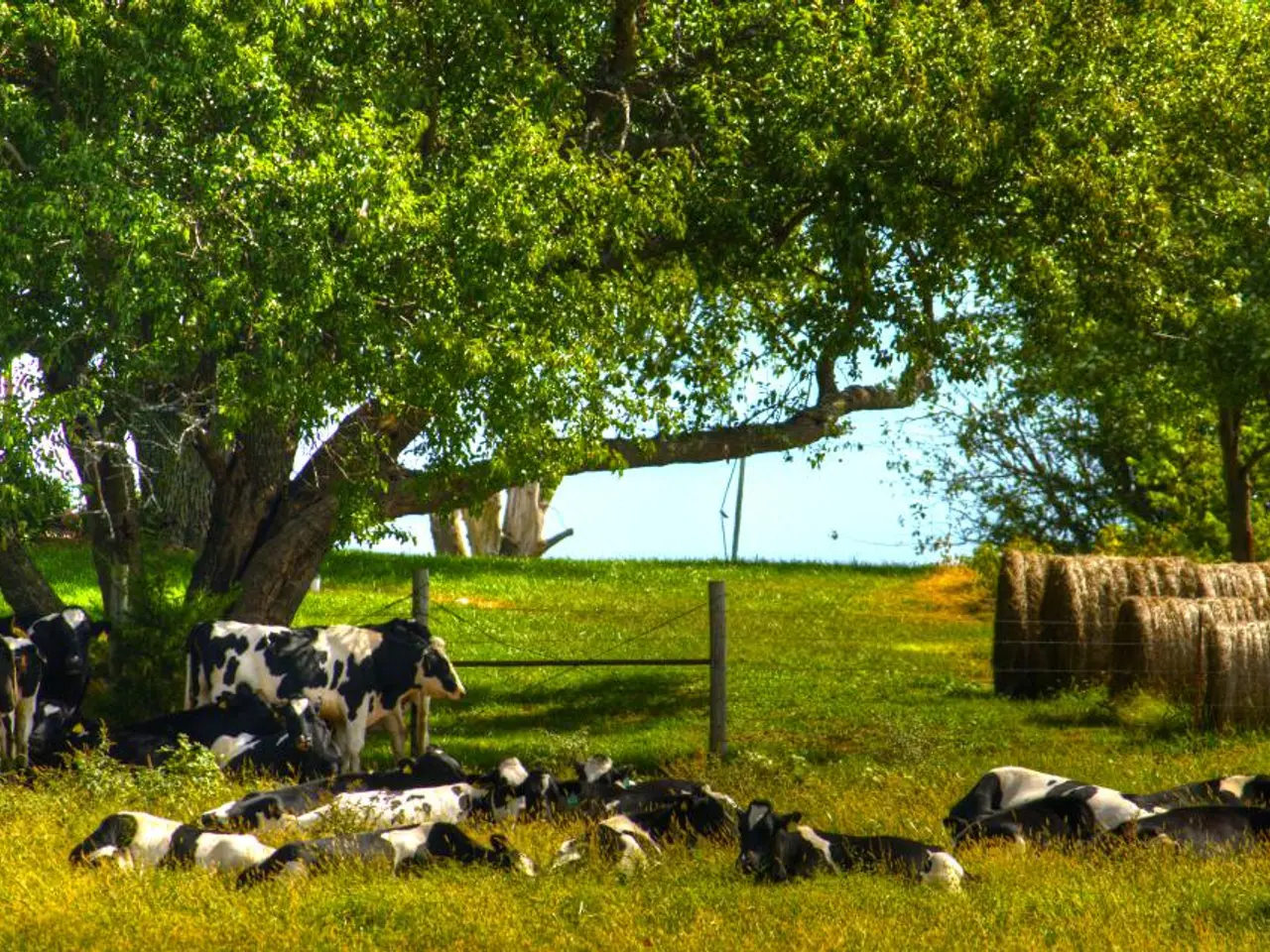Methane Production - Emanations from Cattle, Primarily Burps, not Flatulence
The unique digestive system of cows plays a significant role in the production of methane gas, a potent greenhouse gas. This resource, supported by DairyNZ, delves into the factors contributing to methane gas production within the cow's rumen.
The rumen, a large fermentation vat, hosts a complex ecosystem of microorganisms, including bacteria, archaea (notably methanogens), fungi, and protozoa. These microbes break down plant materials like cellulose, producing volatile fatty acids, carbon dioxide, and methane as byproducts. Among the rumen microbes, methanogens are key methane producers, utilizing hydrogen and carbon dioxide generated during fermentation to produce methane.
The type of feed provided to cows significantly influences methane output. High-fiber diets promote fermentation that tends to produce more methane, whereas certain feed additives, such as oregano essential oil, can alter the rumen microbiome, suppress methanogen populations, and reduce methane emissions.
Cow's production stages, like lactation with high energy demand, can also impact microbial fermentation pathways, sometimes leading to increased methane production despite dietary interventions. Genetics and breed differences also play a role in rumen microbial composition and digestive efficiency, affecting methane emissions. Some breeds or individuals show lower methane output due to variations in metabolism and microbial profiles.
In summary, methane production in cows arises from the enteric fermentation process by rumen microbes, primarily methanogenic archaea converting fermentation byproducts into methane. Factors such as diet, host physiology, microbial ecology, and genetics all modulate this process.
This understanding presents an opportunity to influence the rumen microbiology to reduce methane production. By optimizing feed composition, managing production stages, and potentially selectively breeding for lower methane-producing strains, it may be possible to significantly reduce the amount of methane belched out by cows. This reduction could potentially contribute to mitigating the environmental impact of dairy farming.
[1] T. R. Sharma et al., "Microbial Ecology of the Rumen: Current Understanding and Future Perspectives." Frontiers in Microbiology, vol. 7, 2016, p. 225. [2] S. J. Lechtenberg et al., "Effect of Dietary Supplementation with Oregano Essential Oil on Methane Emissions from Dairy Cattle." Journal of Dairy Science, vol. 96, no. 1, 2013, pp. 207-215. [3] S. K. Ganguly et al., "Methanogenesis in the Rumen: Current Understanding and Future Directions." Journal of Microbiology, vol. 51, no. 4, 2013, pp. 239-248. [4] J. M. Steenfeld et al., "Genetic Variation in Methane Emissions from Dairy Cattle: A Review." Journal of Dairy Science, vol. 86, no. 12, 2003, pp. 3183-3203.
[1] The complex ecosystem in the rumen, consisting of microorganisms like bacteria, archaea (notably methanogens), fungi, and protozoa, contributes to health-and-wellness by influencing the production of methane gas, a key contributor to greenhouse gases.
[2] In the realm of science, understanding the role of feed, production stages, microbial ecology, genetics, and breed on methane production can lead to strategies for reducing methane emissions from cows, potentially improving the health-and-wellness of the environment through the practice of dairy farming.








